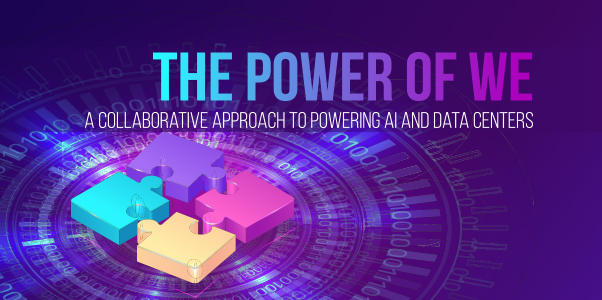
By Chris Crosby
Access to adequate electrical power is a critical challenge facing the data center industry. U.S. power providers are struggling to meet new demand, with critical infrastructure in need of updating and expansion. Unfortunately, the processes that guide how grid enhancements are made is marred by red tape and inefficiency.
Responding at the pace of AI’s unfolding isn’t going to happen under the status quo. As an industry, we need to consider opportunities to be part of the solution, supporting utilities with contributions, commitments and creative problem solving.
Will serve in the AI era
Utilities currently operate under “will-serve” models that have existed for decades under regulations that were designed to ensure that the public and the economy would have adequate, reliable electrical power. Under the will-serve model, electric utilities have a duty to serve demand as it comes. If a company is building a manufacturing site, apartment complex or strip mall, they tell the utility how much power is needed, and the responsibility is on the utility to deliver that power in time for completion of the construction project.
That model worked well in an era where the size of these power requests was modest, when their growth was predictable far in advance, and when utilities had time to factor that into their long-term planning. But the will serve model quickly breaks down when power demands are as large as those required by data center projects, particularly those designed for high-density computing.
A major reason why the will-serve model breaks down is the sheer scale of capital investment needed to meet the needs of a digital economy. To meet the anticipated demand for AI, utilities would need to invest tens of billions of dollars to increase generation capacity at the scale and timing required by data centers. Similar capital investments would be needed to bolster transmission and distribution infrastructure to deliver that power in a reliable way to these facilities.
The will-serve model places burdens on utilities in a way that disrupts their planning processes and places untenable financial burdens on electrical utilities, their shareholders and, importantly, their customers. Costs are passed on to ratepayers in a way that isn’t as equitable as it should be and creates friction in development communities.
Development frenzy creates further kinks
The will-serve model is especially challenging in this boom era, where speculative developers are demanding power in the early stages of a project that may never come to fruition. In these situations, utilities are compelled to plan and invest in infrastructure for a large allotment of power but are stuck with significant sunk costs if the so-called developer is unsuccessful and funding, permitting or customers fall through. The abandoned project leaves the utility and community holding the bag. Those experiences leave communities skeptical of supporting future data center developments from reputable data center developers. It’s a lose-lose-lose proposition for utilities, data center companies and the public.
Negative sentiment toward data center projects only increases the obstacles to development at a time when they are more important than ever. We need an approach that enables utilities and data center companies to cooperate on creative solutions that protect the public and remove a major community objection to data center developments.
Collaborative path forward
The answer is to shift to a “co-serve” model that makes utilities and data center companies jointly responsible for the risk, cost and other aspects of meeting the country’s needs for this critical infrastructure.
Making this collaboration work might include conscientious and confident load ramping, equitable sharing of financial risk and construction costs for power infrastructure – supported by regulatory flexibility and support from government entities, particularly at the regional and local level. The co-serve model enables the kind of collaboration and solutions that solve each of the challenges discussed above.
The current will-serve model is based on outdated processes that places all of these stakeholders on opposite sides of the table. There needs to be a change so that it’s no longer “us and them.”
To successfully meet the urgent need for this critical infrastructure, utilities, data center companies, government entities and the public need to harness the power of “we” by collaborating on practical, sustainable solutions that protect the public from the costs of expanding grid capacity. This is critical for building the support from communities that is such a crucial piece of the puzzle for building this critical infrastructure that is needed for the future of the digital economy.
Chris Crosby is CEO of Compass Datacenters. He can be reached at [email protected].